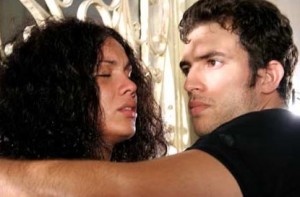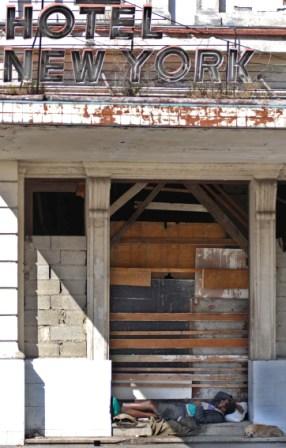Cuban Mythology Past & Present
By Leonardo Padura Fuentes

HAVANA TIMES, April 4 (IPS) – Alberto Yarini Ponce de León is a personality who has reached mythical proportions within popular Cuban culture and imagination. When he was murdered in 1910, at only 26, he was the most powerful pimp in the Cuban sex industry.
Furthermore, he was also a member of the House of Representatives, and secretly aspired to someday throw his hat into the ring for the presidency of the US-backed Republic.
A new film takes as its argumentative pretext the survival of the myth of Yarini as the incarnation of the Cuban male who knows how to dominate women and bedazzle men; at the same time the work represents and defends national pride.
Young Cuban film director Ernesto Daranas conceived the script, from which he was able to produce the film Los dioses rotos (Broken Gods) after overcoming infinite difficulties. The movie has since become the mass cultural event of the year, beginning with its official premiere in the Cuban capital this past February.
Independently of its unquestionable artistic quality and formal courage, and notwithstanding a few reasonable critiques of certain aspects of the film, I think Los dioses rotos offers -in addition to aesthetic enjoyment- important potential that requires several extra-artistic interpretations.
The insight into the national context, which the film almost forces us to achieve, is the fruit of the exemplary manner in which is represents one of contemporary Cuban society’s most jagged phenomena: the existence of diverse social strata.
These social sectors are the differentiated and profound layers of the onion of Cuban life, in which only a few obtain privileged status – and of course I am referring to the image favored by the media. Meanwhile, others are submerged, ignored and even censored by a euphemistic vision of a reality that does not wish to reveal the existence of these underworlds.
The “underclass” is far removed from the rhetoric of official slogans, and when they are detected, in their daily evolution, the result is a tumultuous collapse of lofty revolutionary myths, which are today diluted by the substance of that very same subterranean reality.
An important element to keep in mind is that Los dioses rotos, in addition to having been exhibited commercially, was supported by the principal Cuban film production body, the Cuban Institute of Cinematographic Art and Industry (ICAIC), with the collaboration of the Ministry of Culture.
This means that, despite the difficulties that its producers had to overcome (especially the financial challenges), the film was not an independent or alternative production – as other works by young producers who also approach barbed aspects of this reality. In short, Los dioses rotos was a product endorsed by official institutions.
Parallel realities that shouldn’t surprise anyone

As has been an aim of other works of art exhibited in or outside Cuba, welcomed or not by the island’s cultural institutions, the essence of this piece is to illuminate, from the approach and perspective of art, one of the sectors sealed away from the day-to-day life of many Cubans.
It presents a world of prostitution and pimping that, as expected, is directly related to a host of realities: jail, drug addiction, street ethics, religion, and sex as both an escape route and a way of life. The film reveals the slums and dirty side of the city, degrading and eternal overcrowding and, of course, the ethical problem of the loss of values amid a struggle for existence outside legality. This is a world of economic and moral miseries, violence, betrayal, and the loss of illusions – a world that is also part of today’s Cuba.
For any reader with other more diffused visions of Cuban life, Los dioses rotos is a slap in the face insomuch as it discloses what is deeply submerged as the decay of society and in the broken lives of many of its members. (For that reason, it is not surprising that some people cannot even believe that Cuban life is being reflected in the film).
Just as in Cuban literature -where seldom-published authors, like Pedro Juan Gutiérrez or Ángel Santiesteban, circulate through the shadowy passages of national existence- the film by Daranas is a painful revelation, made from knowledge of and participation in neglected but very real circumstances.

It is not easy to admit, for example, that while many Cuban artists grapple to reveal the grave circumstances of the social, economic and moral contradictions among those who live in this world, other official authorities stroll through a virtually parallel reality. (I just read an article on the issue, and I’m even astonished. A publisher here on the island dared to print a cooking recipe book in which, in the section on rice, they recommended plates with “indispensable ingredients” such as ham, bacon, butter and cheese, and besides speaks of using components such as sausage and beef).
It is perhaps because of the privileged and persistent existence of those untroubled images of national perfection that Cuban contemporary art has assumed as one of its responsibilities the offering of reflections about other sectors of society, and chronicling the current difficulties of life in Cuba.
Without a doubt, it is fatigue that induces triumphalist rhetoric. This is why plays, narratives and films that are endowed with the same investigative and revealing nature as Los dioses rotos attract large audiences. Many viewers especially identify with the social and ethical nature of problems that those works tackle.
That in today’s Cuba there exist characters and backdrops like those presented in this film is not (or should not be) a secret to anybody.
To transform into art those groups of people who are excluded and on the fringe of reality is the creator’s choice, but it is also a social responsibility.
Making a testimony about a reality, and having the capacity to make us see and think about its consequences for society as a whole, is one of the great merits of this type of artistic work, which gives concrete substance and real faces to the challenges. In the end, they make us ask ourselves what is required to solve these problems.
Translation by Havana Times






Going back as far as DEATH OF A BUREAUCRAT,
Cuban movies have represented a space where political issues and social criticism have been put on display in ways which rarely or never appear in the island’s formal political discourse. It’s a further demonstration of the
non-Stalinist character of Cuba’s political system. Sometimes discussion is more open or less open, but they are discussed through the medium of the cinema.
To learn more about the phenomenon, I highly recommend the exhaustive study: CUBAN CINEMA by Micheal Channan.